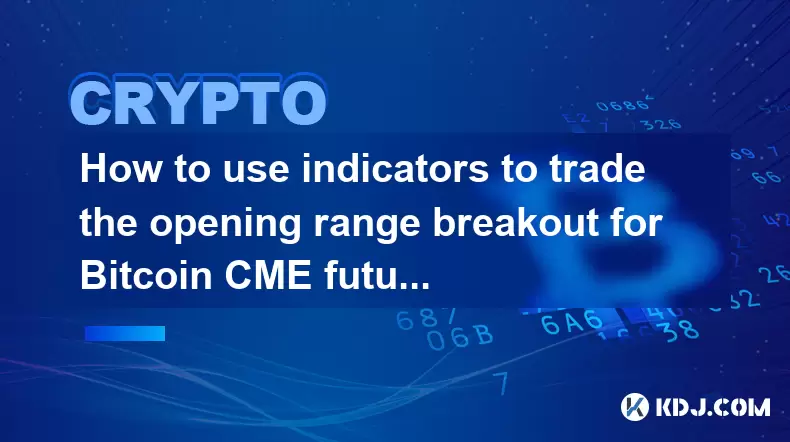-
 Bitcoin
Bitcoin $117900
0.31% -
 Ethereum
Ethereum $3766
0.28% -
 XRP
XRP $3.176
-0.31% -
 Tether USDt
Tether USDt $1.000
0.00% -
 BNB
BNB $795.6
1.51% -
 Solana
Solana $186.8
-1.09% -
 USDC
USDC $0.9999
-0.01% -
 Dogecoin
Dogecoin $0.2353
-1.33% -
 TRON
TRON $0.3226
1.49% -
 Cardano
Cardano $0.8172
-1.08% -
 Sui
Sui $4.178
3.06% -
 Hyperliquid
Hyperliquid $43.05
-3.39% -
 Stellar
Stellar $0.4367
-0.57% -
 Chainlink
Chainlink $18.62
1.47% -
 Hedera
Hedera $0.2828
6.63% -
 Bitcoin Cash
Bitcoin Cash $584.7
5.65% -
 Avalanche
Avalanche $24.81
2.53% -
 Litecoin
Litecoin $112.8
-0.88% -
 UNUS SED LEO
UNUS SED LEO $8.975
-0.08% -
 Shiba Inu
Shiba Inu $0.00001395
-1.07% -
 Toncoin
Toncoin $3.285
-1.05% -
 Ethena USDe
Ethena USDe $1.001
0.01% -
 Polkadot
Polkadot $4.123
0.76% -
 Uniswap
Uniswap $10.49
-0.18% -
 Monero
Monero $326.5
0.14% -
 Dai
Dai $0.9999
-0.02% -
 Bitget Token
Bitget Token $4.576
0.34% -
 Pepe
Pepe $0.00001247
-1.55% -
 Cronos
Cronos $0.1400
3.77% -
 Aave
Aave $295.1
-0.73%
Analysis of Bitcoin Quantitative Trading: Strategies, Tools and Cases
Bitcoin quantitative trading uses algorithms and historical data to predict price movements, offering efficiency but requiring advanced skills and facing challenges like overfitting.
Jun 08, 2025 at 03:56 am

Introduction to Bitcoin Quantitative Trading
Bitcoin quantitative trading represents a sophisticated approach to trading cryptocurrencies, leveraging mathematical models and algorithms to make trading decisions. This method contrasts with traditional, discretionary trading, which relies more on human judgment. The core idea behind quantitative trading is to use historical data and statistical methods to identify profitable trading opportunities. In the context of Bitcoin, this means analyzing vast amounts of market data to predict price movements and execute trades automatically.
Quantitative trading in Bitcoin can offer several advantages, including the potential for higher efficiency, reduced emotional decision-making, and the ability to process large datasets quickly. However, it also comes with challenges, such as the need for advanced technical skills and the risk of overfitting models to historical data. This article will delve into the strategies, tools, and real-world cases of Bitcoin quantitative trading, providing a comprehensive overview of this complex field.
Strategies for Bitcoin Quantitative Trading
Quantitative trading strategies for Bitcoin can vary widely, but they generally fall into a few key categories. One of the most common is trend following, where traders use algorithms to identify and follow market trends. This can involve using moving averages or other technical indicators to determine when to enter and exit trades. For instance, a simple trend-following strategy might involve buying Bitcoin when its price moves above a certain moving average and selling when it falls below.
Another popular strategy is mean reversion, which is based on the idea that prices will eventually return to their average after deviating. In the context of Bitcoin, this might involve identifying times when the price has moved significantly away from its historical average and betting that it will revert to the mean. A trader might use statistical measures like standard deviation to determine when Bitcoin is overbought or oversold and then make trades accordingly.
Arbitrage is another strategy often used in Bitcoin quantitative trading. This involves exploiting price differences between different exchanges or markets. For example, if Bitcoin is trading at a higher price on one exchange than another, a trader could buy it on the lower-priced exchange and sell it on the higher-priced one, profiting from the difference. This strategy requires fast execution and access to real-time data, making it well-suited to automated trading systems.
Tools for Bitcoin Quantitative Trading
Tools are essential for implementing Bitcoin quantitative trading strategies effectively. One of the most fundamental tools is trading software, which can range from simple platforms like MetaTrader to more advanced systems designed specifically for algorithmic trading. These platforms allow traders to backtest their strategies using historical data and then execute trades automatically.
Data feeds are another critical component. Accurate and timely data on Bitcoin prices, volumes, and other market metrics are essential for developing and testing trading models. Many traders use APIs from cryptocurrency exchanges to access this data, which can then be fed into their trading algorithms.
Programming languages like Python are widely used in quantitative trading due to their flexibility and the availability of libraries specifically designed for financial analysis. Libraries such as Pandas for data manipulation and NumPy for numerical computing are particularly useful. Additionally, machine learning libraries like scikit-learn and TensorFlow can be used to develop more advanced trading models.
Risk management tools are also crucial. These can include stop-loss orders, which automatically sell a position if it reaches a certain loss threshold, and position sizing algorithms, which help determine how much capital to allocate to each trade. Effective risk management is essential for long-term success in quantitative trading.
Case Studies in Bitcoin Quantitative Trading
Case studies provide valuable insights into how Bitcoin quantitative trading strategies are implemented in real-world scenarios. One notable example is the use of machine learning to predict Bitcoin price movements. In one study, researchers developed a model that used historical price data and technical indicators to forecast Bitcoin prices with a high degree of accuracy. The model was then used to generate trading signals, which were tested on historical data and showed promising results.
Another case involved a high-frequency trading strategy that exploited microsecond-level price movements on Bitcoin exchanges. The strategy used advanced algorithms to detect and act on these fleeting opportunities, resulting in significant profits over time. This approach required sophisticated infrastructure and real-time data feeds but demonstrated the potential for high-frequency trading in the Bitcoin market.
A third case focused on arbitrage trading between different Bitcoin exchanges. The traders developed a system that continuously monitored prices across multiple exchanges and executed trades when profitable opportunities arose. This strategy required careful management of transaction costs and exchange fees but was successful in generating consistent returns.
Challenges and Considerations in Bitcoin Quantitative Trading
Challenges in Bitcoin quantitative trading are numerous and can significantly impact the success of trading strategies. One major challenge is market volatility. Bitcoin prices can fluctuate wildly in short periods, making it difficult to predict future movements accurately. This volatility can lead to significant losses if not managed properly.
Another challenge is data quality. While there are many sources of Bitcoin market data, not all are reliable or consistent. Ensuring that the data used to develop and test trading models is accurate and comprehensive is crucial for success. Additionally, regulatory risks can affect Bitcoin trading, as changes in regulations can impact market dynamics and trading strategies.
Overfitting is a common issue in quantitative trading, where models are too closely tailored to historical data and fail to perform well on new data. This can be mitigated through rigorous testing and validation processes, but it remains a significant challenge.
Technical complexity is also a barrier for many traders. Developing and maintaining sophisticated trading algorithms requires advanced skills in programming, statistics, and financial analysis. This can limit the accessibility of quantitative trading to those with the necessary expertise.
FAQs
Q: How can I start with Bitcoin quantitative trading if I have no programming experience?
A: If you have no programming experience, you can start by using trading platforms that offer pre-built algorithms and backtesting tools. Platforms like MetaTrader or specialized cryptocurrency trading bots can help you get started without needing to write code. Additionally, online courses and tutorials can help you learn the basics of programming and quantitative trading.
Q: What are the main differences between Bitcoin quantitative trading and traditional trading?
A: The main differences lie in the approach and tools used. Bitcoin quantitative trading relies heavily on algorithms and mathematical models to make trading decisions, aiming to remove human emotion from the process. Traditional trading, on the other hand, often involves human judgment and discretionary decision-making. Quantitative trading also typically requires more advanced technical skills and infrastructure.
Q: Can Bitcoin quantitative trading be profitable for small investors?
A: Yes, Bitcoin quantitative trading can be profitable for small investors, but it requires careful strategy and risk management. Small investors can use trading bots and platforms that offer low-cost access to algorithmic trading. However, they must be aware of the risks and ensure they have a solid understanding of the strategies they are employing.
Q: What role does machine learning play in Bitcoin quantitative trading?
A: Machine learning plays a significant role in Bitcoin quantitative trading by enabling the development of predictive models that can analyze large datasets and identify trading opportunities. These models can adapt to changing market conditions and improve over time, making them valuable tools for traders. However, they require careful validation and monitoring to ensure they perform as expected.
Disclaimer:info@kdj.com
The information provided is not trading advice. kdj.com does not assume any responsibility for any investments made based on the information provided in this article. Cryptocurrencies are highly volatile and it is highly recommended that you invest with caution after thorough research!
If you believe that the content used on this website infringes your copyright, please contact us immediately (info@kdj.com) and we will delete it promptly.
- Cryptos to Watch in 2025: Punisher Coin, Chainlink, and the Altcoin Arena
- 2025-07-27 18:30:13
- Bitcoin, Altcoins, Rebound: Navigating the Crypto Comeback Trail
- 2025-07-27 18:30:13
- Ethereum, Bitcoin, and Altcoins: A Shift in Crypto Tides?
- 2025-07-27 19:10:13
- Windtree Therapeutics' Bold BNB Strategy: A $520 Million Crypto Play
- 2025-07-27 19:10:13
- Solana, Staking, and Unilabs: What's the Buzz in the Crypto Space?
- 2025-07-27 16:50:13
- VeChain, HBAR, Remittix: Navigating the Crypto Landscape in 2025
- 2025-07-27 17:10:12
Related knowledge

What is the significance of the 21-week EMA in a Bitcoin bull market?
Jul 10,2025 at 06:56pm
Understanding the 21-Week EMA in Cryptocurrency AnalysisThe 21-week Exponential Moving Average (EMA) is a technical indicator widely used by traders a...

How to identify a volatility contraction pattern on Bitcoin using indicators?
Jul 07,2025 at 07:28am
What is a Volatility Contraction Pattern in Bitcoin Trading?A volatility contraction pattern refers to a phase where the price movement of an asset, s...

Do indicators work better on a logarithmic or linear scale for Bitcoin's long-term chart?
Jul 08,2025 at 01:42pm
Understanding Chart Scales in Cryptocurrency TradingIn cryptocurrency trading, particularly for analyzing Bitcoin's long-term trends, chart scales pla...

What is the Woodies CCI indicator and can it be used for Bitcoin?
Jul 04,2025 at 05:14pm
Understanding the Woodies CCI IndicatorThe Woodies CCI indicator is a variation of the traditional Commodity Channel Index (CCI), which was originally...

How to use indicators to trade the opening range breakout for Bitcoin CME futures?
Jul 05,2025 at 07:35pm
What Is the Opening Range Breakout Strategy?The opening range breakout (ORB) strategy is a popular trading technique used in both traditional markets ...

How to use the Relative Vigor Index (RVI) for Bitcoin trading?
Jul 07,2025 at 02:00pm
Understanding the Relative Vigor Index (RVI)The Relative Vigor Index (RVI) is a technical analysis tool used to assess the strength of price movements...

What is the significance of the 21-week EMA in a Bitcoin bull market?
Jul 10,2025 at 06:56pm
Understanding the 21-Week EMA in Cryptocurrency AnalysisThe 21-week Exponential Moving Average (EMA) is a technical indicator widely used by traders a...

How to identify a volatility contraction pattern on Bitcoin using indicators?
Jul 07,2025 at 07:28am
What is a Volatility Contraction Pattern in Bitcoin Trading?A volatility contraction pattern refers to a phase where the price movement of an asset, s...

Do indicators work better on a logarithmic or linear scale for Bitcoin's long-term chart?
Jul 08,2025 at 01:42pm
Understanding Chart Scales in Cryptocurrency TradingIn cryptocurrency trading, particularly for analyzing Bitcoin's long-term trends, chart scales pla...

What is the Woodies CCI indicator and can it be used for Bitcoin?
Jul 04,2025 at 05:14pm
Understanding the Woodies CCI IndicatorThe Woodies CCI indicator is a variation of the traditional Commodity Channel Index (CCI), which was originally...

How to use indicators to trade the opening range breakout for Bitcoin CME futures?
Jul 05,2025 at 07:35pm
What Is the Opening Range Breakout Strategy?The opening range breakout (ORB) strategy is a popular trading technique used in both traditional markets ...

How to use the Relative Vigor Index (RVI) for Bitcoin trading?
Jul 07,2025 at 02:00pm
Understanding the Relative Vigor Index (RVI)The Relative Vigor Index (RVI) is a technical analysis tool used to assess the strength of price movements...
See all articles

























































































